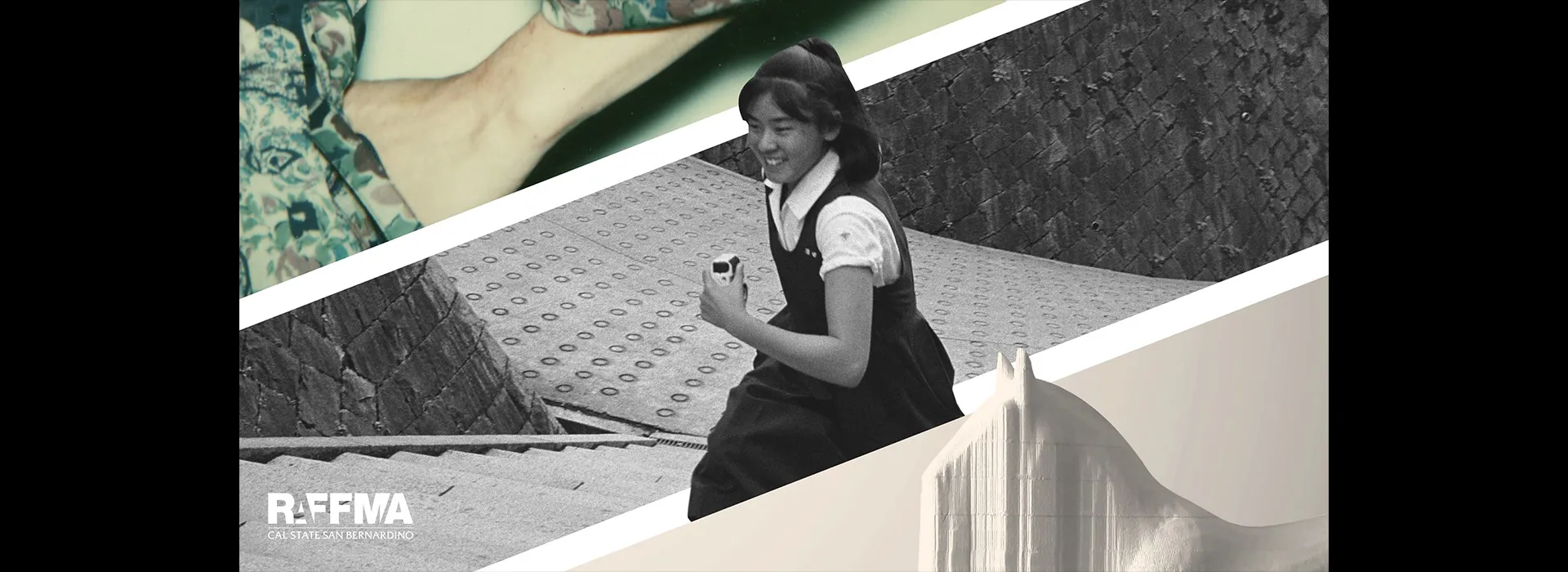Joe Gutierrez Office of Strategic Communication (909) 537-5007 joeg@csusb.edu

After being closed for more than two months to install three new art exhibits, The Robert and Frances Fullerton Museum of Art at Cal State San Bernardino is ready to welcome guests back with an opening reception on Thursday, Oct. 5, from 6-8 p.m.
RAFFMA returns with the exhibits “Ed Gomez: Horsemen,” “Andy Warhol: Polaroids” and “Return to Form: Dennis Hopper Photographs Japan.” All three exhibitions will be on display Oct. 7-Dec. 9.
Ed Gomez’s “Horsemen” serves as an artistic interrogation into the intersection between Christian eschatological prophecies found in the Book of Revelation and the book “Behold a Pale Horse” by conspiracy theorist William Cooper.
The Four Horsemen of the Apocalypse are represented in portraits as contemporary figures that have been reimagined through modern day filters found in film, news stories and popular culture. Each portrait represents a contemporary personification of the horsemen Conquest or Pestilence, War, Famine, and Death, and calls into question binary notions of good and evil, fact or fiction, as well as fear-based sensationalism filtered through the media. Also on display is a large polystyrene sculpture of a draped Arabian horse that serves as a symbol of “the pale horse,” which represents Death.
Gomez, a CSUSB assistant professor in studio art, received his BFA from Arizona State University in 1999 and his MFA from the Otis College of Art and Design in 2003. Gomez’s interdisciplinary art practice revolves around the questioning of exhibition practices, institutional framework and historical models of artistic production. He has exhibited his work nationally and internationally, and has curated various art exhibitions that deal with California and Mexico as an area of aesthetic production.
In 2006, he co-founded the MexiCali Biennial, a bi-national art and music program addressing the region of the U.S.-Mexico border, which he is a director and co-president. This project serves not only as a curatorial project, but also a satirical statement to the abundance of biennials occurring around the globe and the impact they have on the art community. Gomez is also the director of The Gallery of Contemporary Art (G.O.C.A.), a traveling self-contained exhibition space within a suitcase, which has showcased emerging and established artists from Los Angeles, Phoenix, New York and Mexico.
Gomez will discuss his exhibition “Horsemen” on Thursday, Oct. 19, from 6-8 p.m. as part of RAFFMA’s monthly “Conversations on Art” series.
“Andy Warhol: Polaroids” features a selection of photographs by the legendary pop artist from RAFFMA’s permanent collection. Warhol (1928-1987) was a passionate collector of photographs and an avid photographer. He especially enjoyed taking Polaroids and carried his Polaroid camera everywhere he went. Warhol amassed an enormous collection of portraits of his friends, lovers, collectors, dealers, celebrities, their entourage and himself. A small selection of these photos will be included in the RAFFMA exhibition.
“My idea of a good picture,” Warhol once famously said, “is one that’s in focus and of a famous person.”
In spring 2008, the Andy Warhol Foundation for the Visual Arts donated more than 150 of Warhol’s photographs — original Polaroids and gelatin silver prints — to RAFFMA. The donation was part of the Andy Warhol Photographic Legacy Program honoring the foundation’s 20th anniversary. Through this gift, the foundation hoped to pique the interest of the public and have people learn about the vital role photography played in Warhol’s artistic production.
Dennis Hopper (1936-2010), who became close friends with Warhol in the 1960s, was an actor, filmmaker, photographer, painter and sculptor. Hopper began working with photography in his early 20s when fellow actor James Dean suggested that Hopper begin taking pictures as a way of learning the art of making pictures the way a movie camera would — in full frames with no intervention in the darkroom. And like Warhol, with whom he had worked on Warhol’s 1964 underground movie “Tarzan and Jane Regained … Sort of” and whose art he collected, Hopper took his camera everywhere, earning himself the nickname “the tourist.”
Hopper stopped photography in 1967, less than a decade after he started, when he began preparing for his directional debut in the award-winning film “Easy Rider.”
In 1989, Hopper traveled to Japan to participate in a retrospective of his films and photographs in Tokyo. More than 20 years after he stopped his photography, he purchased a Nikon 35 Ti camera during his trip to Kyoto and shot 30 rolls of film, or roughly 300 images, in just a few days.
Guests will get to observe 60 small and larger-scale photographs of Hopper’s visit to Japan, attesting to a significant, if short-lived, revival of his photographic interests. The selected works for the Hopper exhibition are from the archives of the Hopper Art Trust, which was established in 2010 by the Dennis Hopper Estate and aims to preserve the artistic career and visionary legacy of the late Hopper.
RAFFMA’s “Return to Form: Dennis Hopper Photographs Japan” is curated by Micronaut, a firm focused on the design and creation of museum and gallery exhibitions.
About RAFFMA
The Robert and Frances Fullerton Museum of Art is a nationally recognized museum accredited by the American Alliance of Museums. The only accredited art museum in San Bernardino, RAFFMA has accumulated a permanent collection of nearly 1,200 objects focusing on Egyptian antiquities, ceramics and contemporary art. Located at Cal State San Bernardino, RAFFMA houses the largest permanent and public display of Egyptian art in Southern California.
General admission to the museum is free. Suggested donation is $3. Parking at Cal State San Bernardino is $6 per vehicle and $3 on weekends.
The museum is open Monday-Wednesday and Saturday, 10 a.m.-5 p.m., Thursday, noon-8 p.m. and closed Sunday and Friday. For more information, call (909) 537-7373 or visit the RAFFMA website at raffma.csusb.edu.
For more information about Cal State San Bernardino, contact the university’s Office of Strategic Communication at (909) 537-5007 and visit news.csusb.edu.